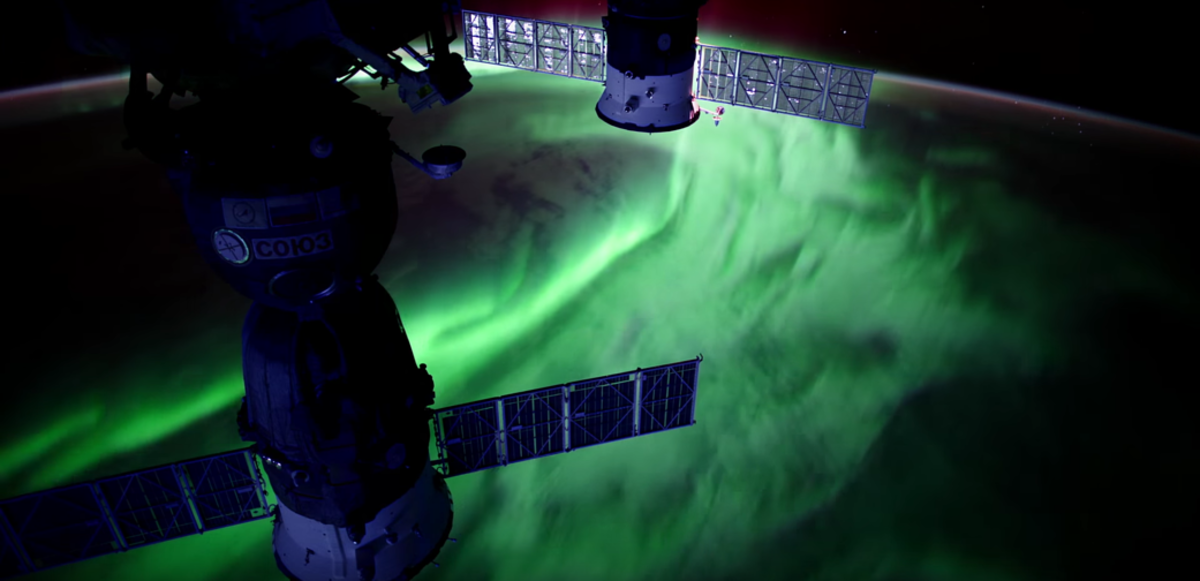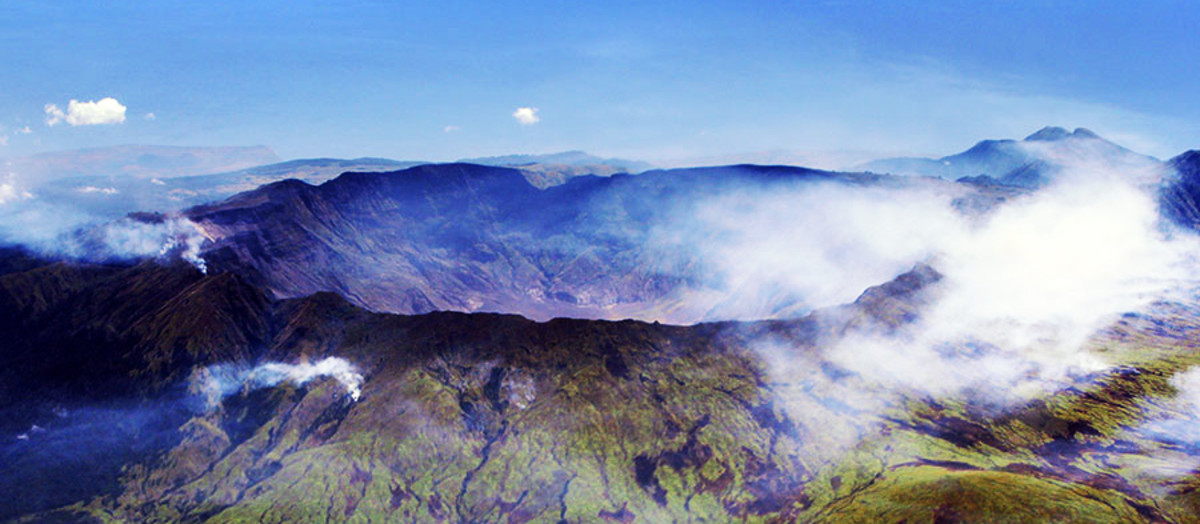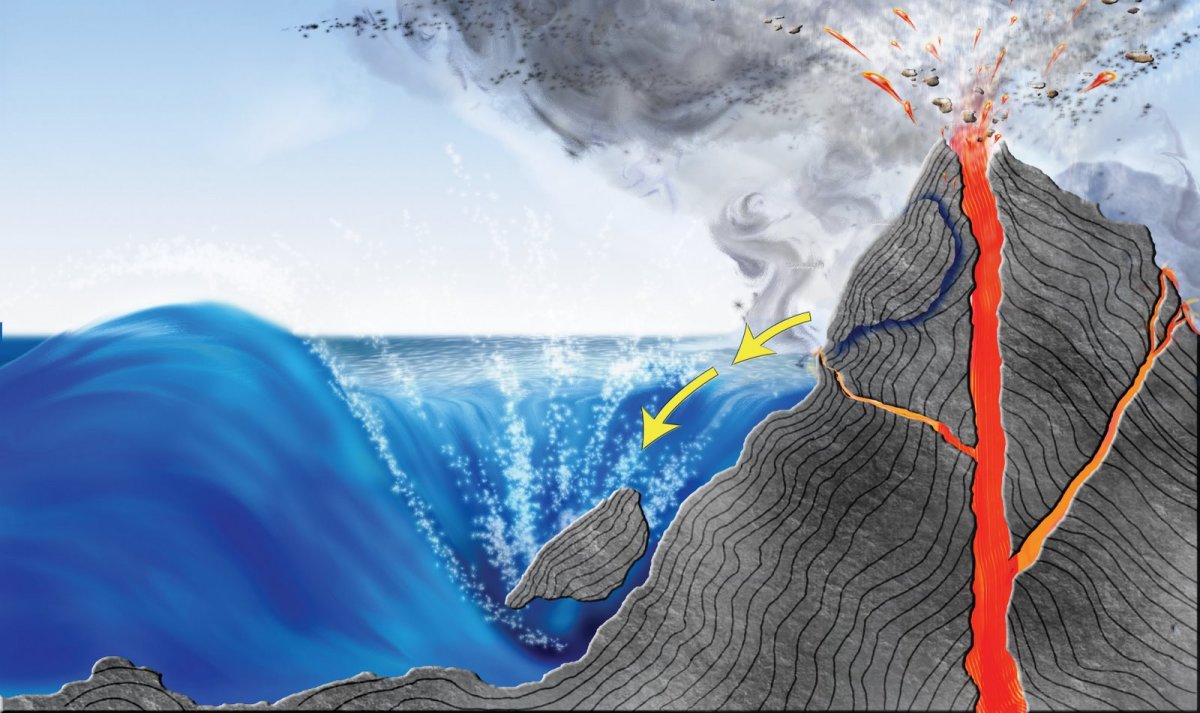Link Between Record Auroras, Large Quakes and UFOs?
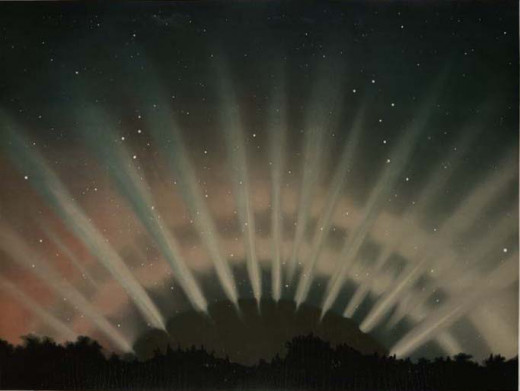
Another hubpages author, claudiafox, is convinced that solar storms are linked to potentially destructive earthquakes. Since most such events occur at solar max or when the sun produces more sunspots than usual, there should be a correlation with those periods as well as when there are more aurora observed on earth at lower than usual altitudes.
Recently I published a hub that put forward the notion that earthquakes occur more frequently during the two extremes of solar activity or at maximum and minimum. When looking at large and deadly earthquakes I found what appeared to be confirmation of that. Also such earthquakes seemed more likely around the time that the earth was closest to the sun in it's orbit.
When I tried to replicate the later finding using more data or of significantly large earthquakes that most often weren't particularly destructive or deadly, the results were not statistically significant for the conclusion reached earlier. Due to some inconsistent results for different periods of time when comparing the phases of the solar cycle to large earthquakes, I felt as though more work was needed to validate my results.
I decided to look further back in time and see what the results then would look like. In searching for data, I also chose to utilize information related to the numbers of observations of the Aurora Borealis. I was lucky enough to find (thanks to Google Books) observations for 1707-1895, made from the London, England area, published in the Journal of the Scottish Meteorological Society from 1900. Since the observations prior to 1800 were more spotty in general and the earthquake record also was not very complete prior to the late 18th century, I decided to use just the data from 1800 to 1879. The reason it ended in 1879 was because another source of data related to Highly Strange or unexplained phenomena such as UFOs from ancient times, a collection entitled “Wonders in the Sky” by Vallee and Aubeck, ended at that point in their chronology.
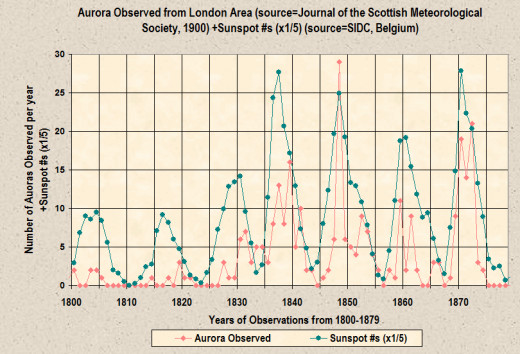
Interestingly, the results of my study did show some significance for earthquakes occurring at solar maximum but not significant enough for my satisfaction. There was even less of a case for there being a connection between anomalous phenomena and sunspot activity.
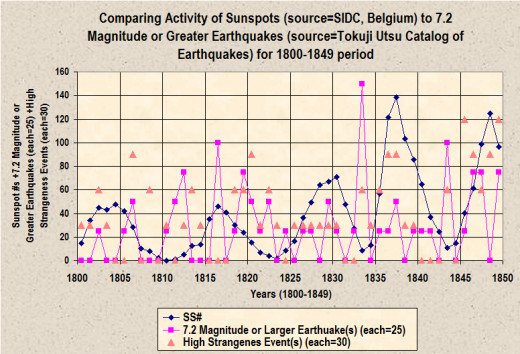

However, when I compared earthquakes and high strangeness events to observations of the Aurora Borealis, both showed a strong correlation to peaks in such observations (especially during the period from 1870-1872).
In tabulating the data comparing the earthly events to sunspot activity I decided to discard all years where there was only one earthquake or anomalous event, choosing only those years with a minimum of two events. In that way I felt that some of the random noise would be eliminated.
For the data where such events were compared to the aurora borealis, I went a step further and looked at only those years with at least three events of each category in a given year. I determined which to use in each case based on multiplying the yearly average of the events by 1.5 and choosing that, or figures just above it, as the baseline.
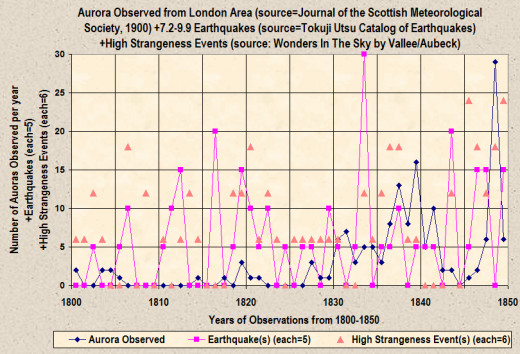
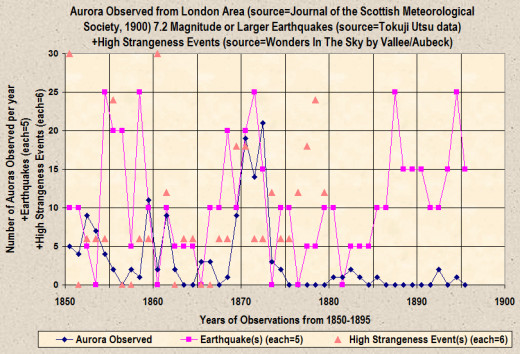
In the table below, one can see the significance by looking at the percentage of the number of years for such events when compared to the total number of years within its tier (tier 1 = 0-4 observations, tier 2 = 5-10 observations, and tier 3 = 11 or more observations).
While there appeared to be a solid connection between earthquakes and aurora for the years 1870-1872, there was only a significant number of quakes just before and after the exceptional, short lived peak of 1848. On the other hand, highly strange events occurred consistently during and in the two years leading up to and the year following that earlier spike and was less involved in the later three year peak.
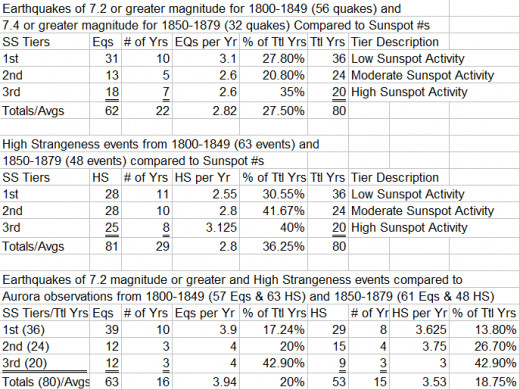
What does all this mean to the less involved than myself? The results indicate that at higher than average sunspot peaks that correspond to more aurora observations at lower latitudes on earth, significantly large earthquakes are more likely, make that twice as likely, to occur than in an average year. And that's not all; UFOs should be buzzing the planet at the same time as higher than usual solar activity is occurring.
How does that relate to the present? Since we are currently in a below average peak of sunspot activity, earthquake activity should not be as consistent in its increase in activity at the present solar max. However, there was a cycle similar to the present one at the start of the 20th Century. Like the one we are experiencing now, the maximum was divided, with one occurring first within the northern hemisphere of the sun and then followed by one 2-3 years later in the southern hemisphere of the sun. Back then, during a bit of a slow down between the two peaks, a larger number of 7.4 magnitude or greater quakes occurred. That year was 1906. 2013 may be very similar to that year (the sunspot peak in the southern hemisphere of the sun is expected in early 2014).
© 2012 Joseph Ritrovato



